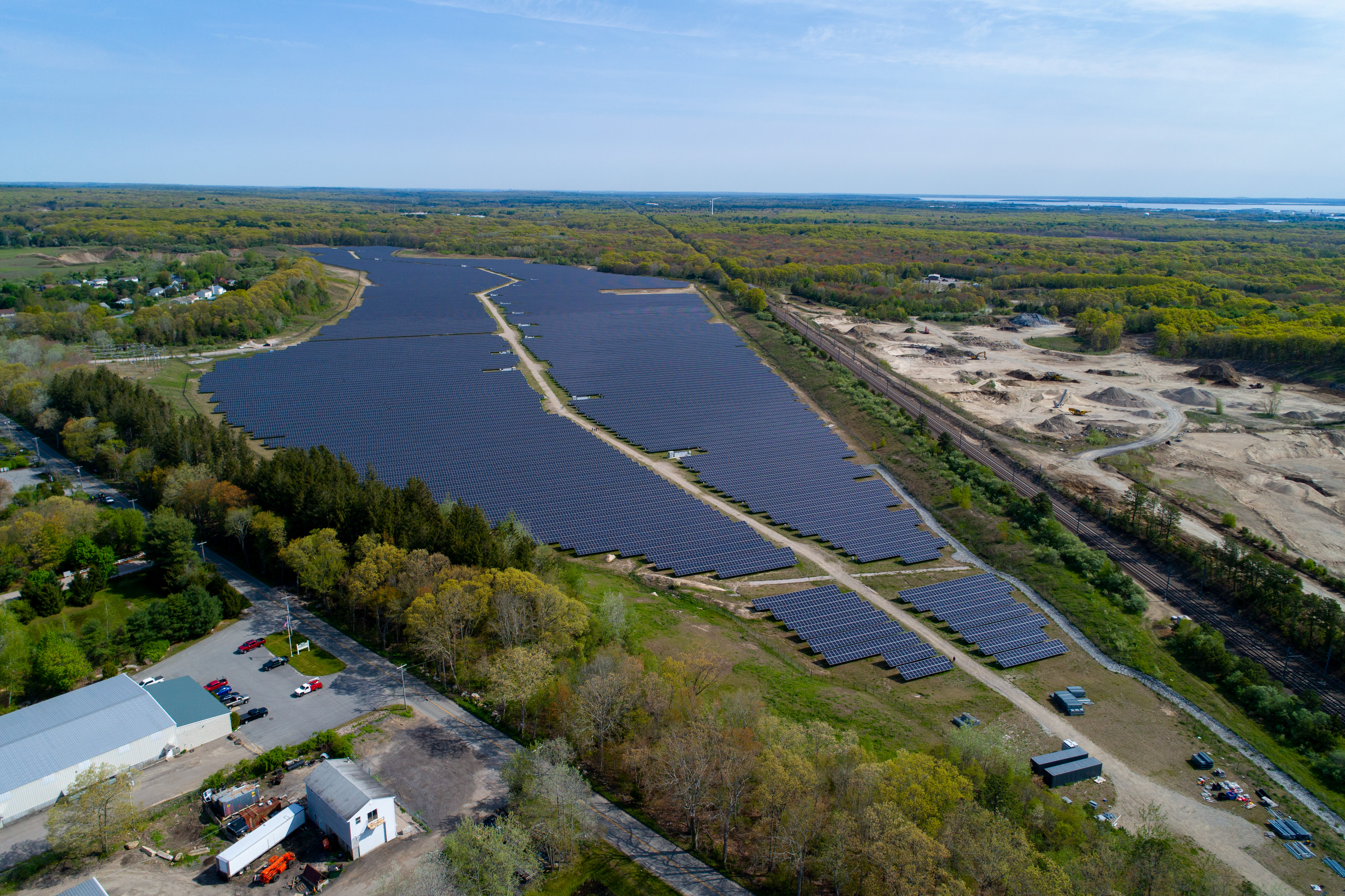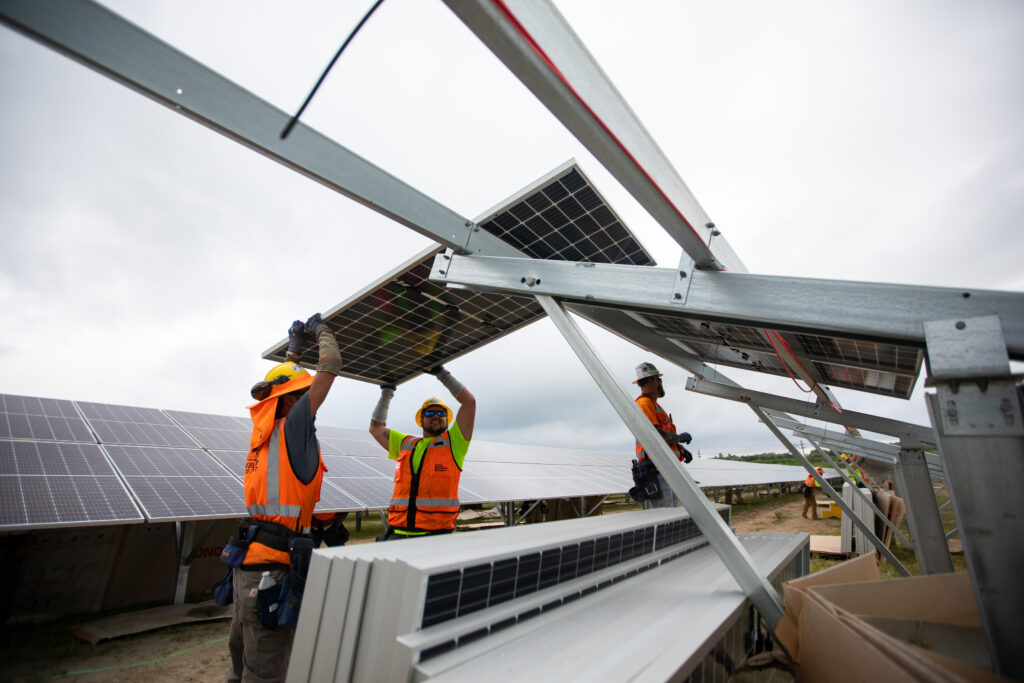
For years, the 240-acre Dry Bridge site in North Kingstown, Rhode Island, may not have seemed like the ideal spot for a 40 MWac solar installation. Once home to a dusty, noisy sand and gravel extraction plant, the land sat idle, benefiting neither the community nor the environment.
Today, it tells a different story. This remarkable transformation is a result of the foresight, partnership, and unwavering persistence of Brown University, Energy Development Partners, and MN8 Energy.
From Gravel Pit to Clean Energy
The journey began with Brown University setting its ambitious commitment in 2018 to achieve net-zero greenhouse gas emissions by 2040. To help realize this goal, securing significant, local sources of clean energy was essential.
Brown became the sole off-taker for the Dry Bridge Solar project, signing a 25-year power purchase agreement. It will allow Brown to obtain and retire all of Dry Bridge’s renewable energy certificates to offset its power usage.
Getting a project of this size from concept to reality wasn’t easy. It required:
- New underground and overhead distribution lines to deliver power from the project
- A new power substation across from the Wickford Junction train station
- More than 117,000 solar panels, each transported to site, installed, and tested
- Extensive permitting and regulatory approvals
From initial site preparation to navigating interconnection agreements with Rhode Island Energy, every step required close coordination between MN8, Energy Development Partners, Brown, and local and state officials.
Despite regulatory hurdles and a mid-project ownership transfer, the Dry Bridge project pressed forward, fueled by determination, cooperation, and a 100% commitment to renewable energy.

Photos of crews working to install solar panels at the Dry Bridge Solar site in North Kingstown.
A Dual Impact: Environmental Restoration and Economic Benefits
Even before starting operations in September 2023, the Dry Bridge project had begun to make a profound impact on both the environment and the economy, a positive trajectory that will continue for decades to come.
Environmental Wins
The former gravel pit of Dry Bridge Sand and Stone, Inc. is now home to 117,210 solar panels that will produce 66.8 million kilowatt-hours (kWh) of clean electricity each year. That’s enough to power nearly two-thirds of Brown’s 231 campus buildings. It also translates to 16,500 metric tons of CO2 avoided each year (the equivalent of removing 3,500 gas-powered cars from the road). Dry Bridge marks a major step toward Rhode Island’s 100% renewable energy goal by 2033.
Beyond its energy generation, the site itself has been meticulously restored with pollinator-friendly vegetation, creating vital habitats for bees, butterflies, and other species. This was all accomplished without extensive tree-clearing or disruption to nearby neighborhoods, as the land was already set back from local residents and had trees lining the property to provide visual screening. This project also significantly advances Brown University’s decarbonization goals, complementing other ambitious initiatives like the use of sustainable building materials, reduced meat consumption in campus dining halls, electrification of campus vehicles, and exploration of geothermal energy.
Economic Benefits
Dry Bridge has also delivered substantial value to the surrounding communities through:
- Local job creation during site preparation, construction, and electrical work
- Contracting opportunities for engineering, logistics, and permitting
- Energy cost savings and net metering credits for Brown, safeguarding the institution from price volatility
- Increased tax revenue and economic stimulus for North Kingstown and the state of Rhode Island
In essence, Dry Bridge is more than just a renewable energy source; it’s a long-term investment in people, places, and the future.
A Scalable Model for America’s Clean Energy Potential
Beyond its local success, Dry Bridge serves as a scalable blueprint for communities across the nation. By transforming underutilized land into a high-performing renewable energy generation site, the project proves that clean energy can be a win-win for all stakeholders.
The success of Dry Bridge is a testament to the power of collaboration. Brown, MN8, Energy Development Partners, regulatory agencies and the utility converged, sharing expertise, solving challenges, offering support, and ultimately, driving the project to a successful completion. It was a true community effort, showcasing how collective action can overcome significant hurdles.
We believe this kind of model is the key to unleashing America’s vast untapped energy potential and supporting critical, nonpartisan priorities like:
- Energy independence by reducing reliance on imported fossil fuels
- Economic growth through local job creation
- Resilience via locally generated, grid-connected power
- Strengthening American manufacturing by prioritizing U.S.-made materials, wherever possible
When bolstered by strong community support, a steadfast commitment to environmental improvement, local job creation, and ambitious long-term goals of energy independence and zero emissions, it’s clear that clean energy has a long and bright future in America.